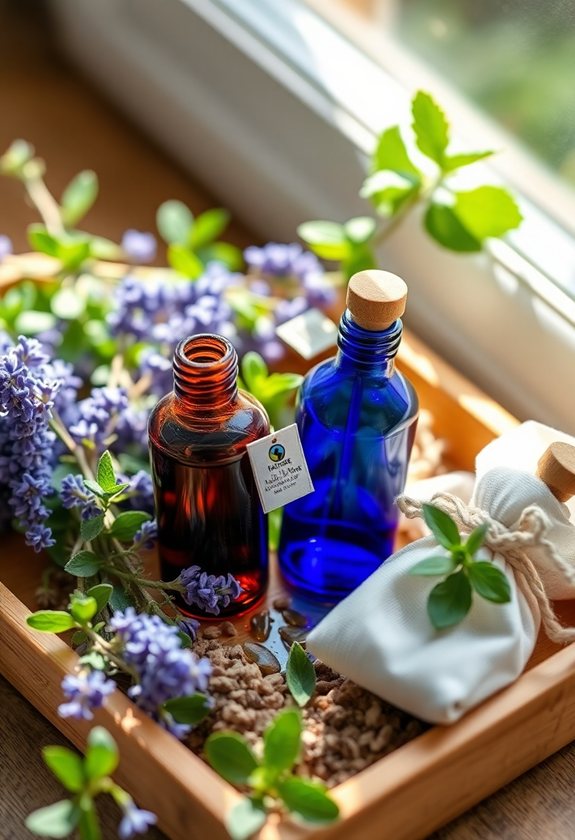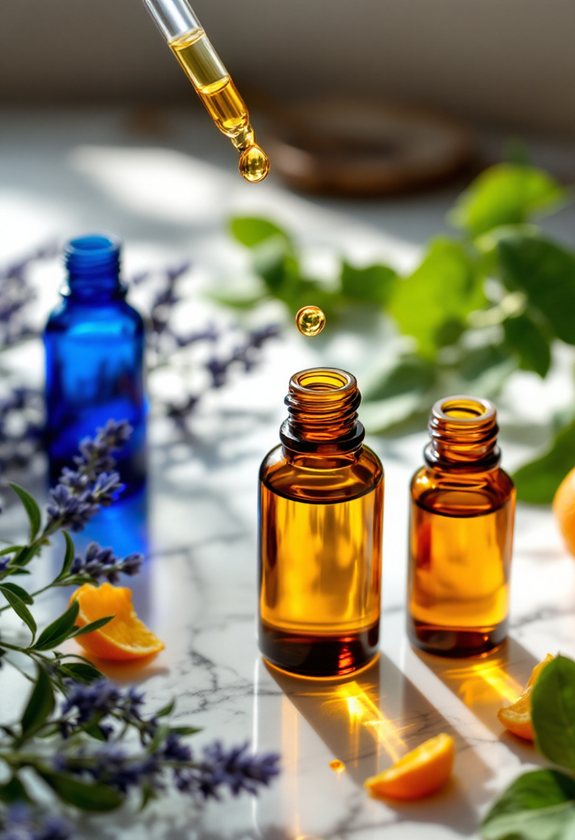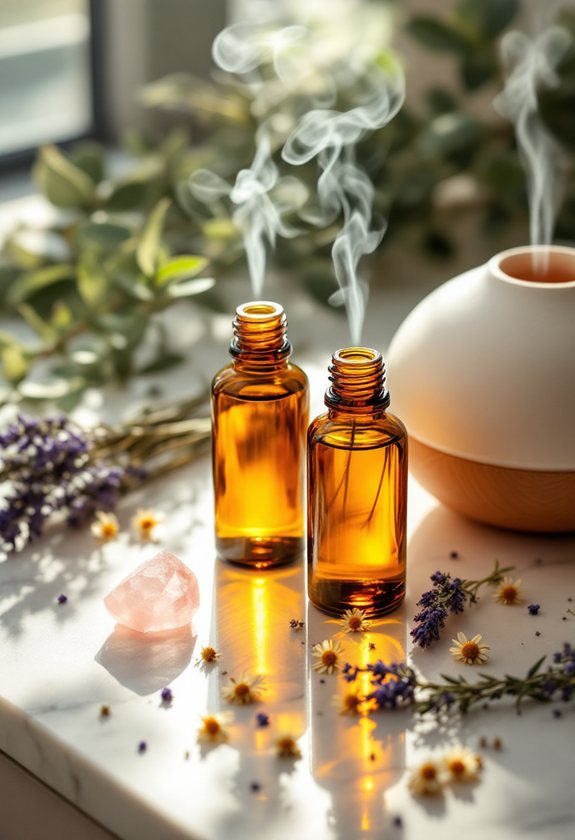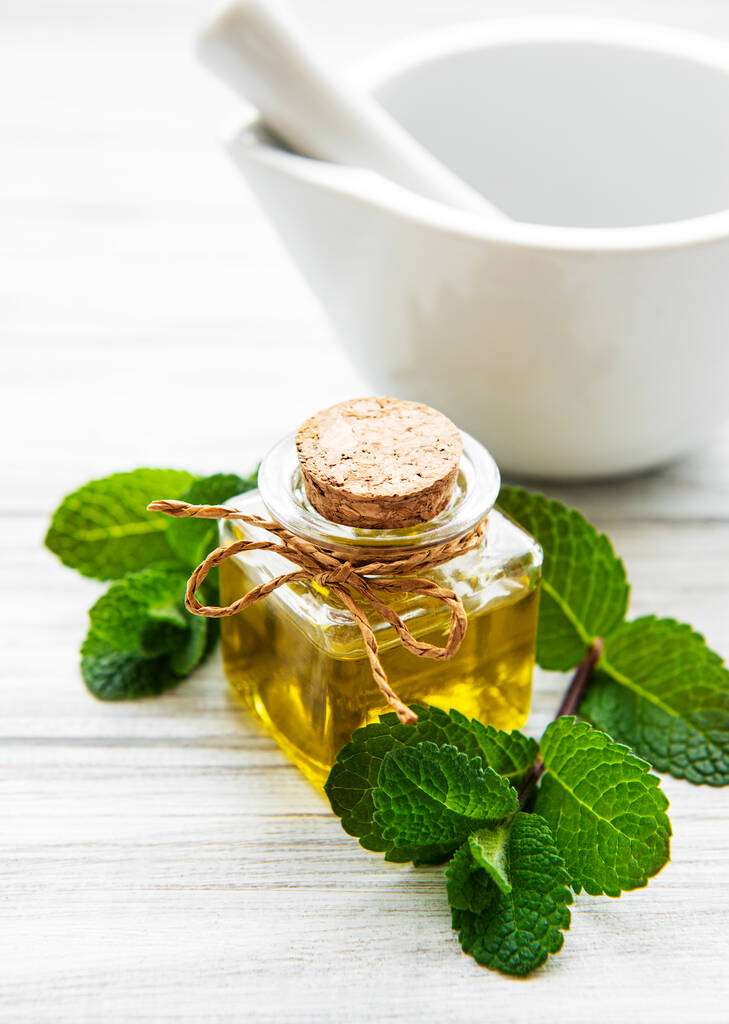You’ll get the most value from investing in pure lavender, tea tree, peppermint, eucalyptus, frankincense, lemon, rosemary, chamomile, ylang ylang, and bergamot vital oils. Look for amber glass bottles, Latin plant names, and detailed origin information to guarantee quality. While these oils may cost more than synthetic alternatives, their therapeutic benefits and versatility make them worth the investment. Understanding proper storage and application methods will help enhance their potential.
Key Takeaways
- Lavender and tea tree oils offer versatile therapeutic benefits and are essential staples for any aromatherapy collection.
- Pure peppermint oil provides respiratory support, mental clarity, and natural cooling effects worth the investment.
- Eucalyptus and frankincense oils deliver powerful respiratory benefits and anti-inflammatory properties when properly sourced.
- Lemon and sweet orange oils offer mood-lifting properties and natural cleaning capabilities at reasonable price points.
- High-quality rose and jasmine oils command premium prices but deliver potent emotional and skincare benefits.
What Makes an Essential Oil “Pure” and Why It Matters
While exploring the world of vital oils can feel overwhelming, understanding what makes an oil “pure” will help you make smart purchases and get the most benefit from aromatherapy.
Pure fundamental oil extraction methods like steam distillation and cold pressing guarantee you’re getting nature’s true essence, without synthetic additives or fillers.
You’ll know you’ve found a pure oil when you see Latin plant names, detailed country of origin, and proper amber glass packaging.
The pure oil benefits are worth the investment – you’ll get improved therapeutic effects and avoid potentially harmful synthetics.
Top Carrier Oils to Maximize Your Aromatherapy Experience
To get the most out of your vital oils, you’ll need to pair them with the right carrier oils for safe, effective use on your skin and hair.
When exploring carrier oil benefits, consider jojoba oil‘s versatility – it mimics your skin’s natural oils while lasting up to 5 years.
For effective oil blending techniques, start with fractionated coconut oil. It’s odorless and lightweight, making it perfect for preserving your important oils’ natural fragrances.
You’ll also love meadowfoam oil’s stability and protective qualities, while sweet almond oil provides quick absorption and rich vitamin content for both skin and hair care applications.
The Science Behind Essential Oil Quality Testing
Understanding what’s in your oils means looking beyond marketing claims and fancy labels. When you’re using vital oils for wellness, you’ll want to know they’ve been thoroughly tested for quality and purity through chemical profiling methods like gas chromatography and mass spectrometry.
These sophisticated tests can detect any unwanted substances through adulteration detection, guaranteeing your oils are free from synthetic additives, pesticides, or contaminants.
Quality testing also includes sensory evaluation by trained experts who check the oils’ aroma, color, and consistency. While there’s no universal “therapeutic grade” standard, thorough testing helps guarantee you’re getting pure, authentic oils worth your investment.
Essential Oil Storage and Shelf Life Guidelines
Proper storage of crucial oils plays a significant role in maintaining their therapeutic benefits and extending their usable life. To optimize shelf stability and guarantee safety, store your oils in dark glass containers away from direct sunlight and heat sources. Fundamental oil preservation methods include keeping bottles tightly sealed and storing them in cool, dry locations.
| Storage Factor | Impact on Oils | Do’s | Don’ts |
|---|---|---|---|
| Temperature | Affects potency | Store 60-70°F | Leave in car |
| Light | Causes degradation | Use dark bottles | Display openly |
| Air Exposure | Triggers oxidation | Keep sealed | Leave caps loose |
| Moisture | Promotes spoilage | Store in dry place | Keep in bathroom |
Sustainability and Ethical Sourcing in Essential Oil Production

When you’re choosing essential oils, sustainability and ethical sourcing should be at the heart of your purchasing decisions.
Look for companies that practice sustainable agriculture through organic farming, crop rotation, and water-efficient methods that protect our planet’s resources. Your oils’ quality directly connects to these earth-friendly practices.
Sustainable farming methods not only protect our environment but also ensure your essential oils maintain their therapeutic potency and purity.
Ethical wildcrafting guarantees plants are harvested responsibly from their natural habitats, preserving ecosystems for future generations.
Choose brands that partner with indigenous communities and maintain transparent supply chains. By selecting oils from certified sustainable sources, you’ll enjoy pure products while supporting environmental stewardship and fair labor practices worldwide.
Understanding Essential Oil Certifications and Labels
The maze of certifications and labels on crucial oil bottles can make your head spin when you’re trying to make smart purchasing decisions.
Understanding certification importance starts with recognizing that terms like “therapeutic grade” aren’t regulated. Instead, look for oils from companies with independent accreditation and medical board-approved programs.
When doing your label analysis, focus on specifics: Latin names should be clearly stated, country of origin listed, and third-party testing results available.
Don’t be swayed by fancy marketing terms – reputable companies will provide transparency about their testing methods and sourcing practices rather than relying on unverified claims.
Price vs. Quality: Making Smart Essential Oil Investments
Since steering essential oil prices can feel overwhelming, understanding the relationship between cost and quality will help you make smarter investments. Your value assessment should focus on extraction methods, plant origin, and ethical sourcing rather than price alone.
| Price Range | What to Expect | Investment Strategy |
|---|---|---|
| Under $15 | Likely diluted or synthetic | Avoid; high risk |
| $15-$40 | Variable quality; research needed | Compare GC/MS reports |
| Over $40 | Premium quality if from reputable source | Worth it for rare oils |
Don’t let unusually low prices tempt you – they often signal adulterants or synthetic ingredients. Instead, focus your investment strategy on certified organic oils from transparent suppliers who provide detailed sourcing information and testing reports.
Must-Have Essential Oils for Your Wellness Collection
Building a well-rounded vital oil collection starts with understanding which oils deliver the most versatile benefits for your wellness goals. For maximum wellness benefits, start with lavender, peppermint, and tea tree – three powerhouse oils that address multiple needs from sleep to immunity.
Start your wellness journey with versatile powerhouse oils – lavender, peppermint, and tea tree deliver essential benefits from sleep to immune support.
You’ll want to create indispensable oil blends that serve different purposes throughout your day.
Combine lavender with bergamot for stress relief, peppermint with eucalyptus for energy and respiratory support, or tea tree with frankincense for immune and skin health.
These foundational oils will give you the most value while supporting your comprehensive well-being.
Red Flags to Watch for When Buying Essential Oils
When shopping for vital oils, you’ll need to watch out for several warning signs that could indicate poor quality or misleading marketing practices.
Look for red flags like unusually low prices, vague labeling without Latin names, and terms like “fragrance” instead of specific key oils.
Be wary of companies that won’t provide detailed sourcing information or GC/MS test results.
Don’t trust products lacking proper certifications or transparency about their manufacturing processes.
Watch out for synthetic additives hiding behind terms like “parfum” or mysterious proprietary blends.
If a company can’t clearly explain where and how they source their key oils, it’s best to keep shopping.
Best Practices for Essential Oil Application and Use
Although essential oils offer powerful therapeutic benefits, knowing how to use them properly is crucial for both safety and effectiveness.
Before you begin any application techniques, always dilute your oils with carrier oils like coconut or jojoba, using a 1-3% concentration for your face and up to 30% for targeted areas.
For the best results, apply your diluted blend to pulse points or mix it with your favorite lotion.
Remember key safety precautions: perform a patch test initially, avoid sensitive areas, and store oils in dark glass bottles away from heat and light.
If you’re pregnant or have health concerns, consult a professional before use.
Frequently Asked Questions
Can Essential Oils Help With Seasonal Allergies and Environmental Sensitivities?
You can use crucial oils for allergy relief and environmental support, but you’ll need to dilute them properly and consult a healthcare provider before starting aromatherapy for your symptoms.
What Essential Oils Are Safe to Use Around Pets?
You can safely use frankincense, lavender, chamomile, lemongrass, and sweet orange around pets. Always dilute oils, guarantee proper ventilation, and keep diffusers out of your pet’s reach for safety.
How Do Essential Oils Interact With Prescription Medications?
You’ll need to tell your doctor about crucial oil use since drug interactions can occur through absorption. Common risks include altered medication metabolism and increased bleeding with certain oils.
Can Essential Oils Be Used During Pregnancy and Breastfeeding?
You can safely use certain crucial oils during pregnancy and breastfeeding if you follow proper safety guidelines. Stick to recommended oils like lavender and ginger, always dilute them, and consult your healthcare provider initially.
Why Do Some Essential Oils Smell Different Across Different Brands?
You’ll notice scent variations between brands due to different extraction methods, growing regions, and harvesting times. Brand consistency and oil purity also depend on processing techniques and quality standards.
Conclusion
You’re now equipped to make informed decisions about pure vital oils that will improve your wellness path. Remember to check for quality markers, proper sourcing, and storage guidelines as you build your collection. Whether you’re seeking relaxation, natural healing, or simply a more mindful lifestyle, these pure aromatherapy oils can become powerful tools in your self-care toolkit when used properly and mindfully.



